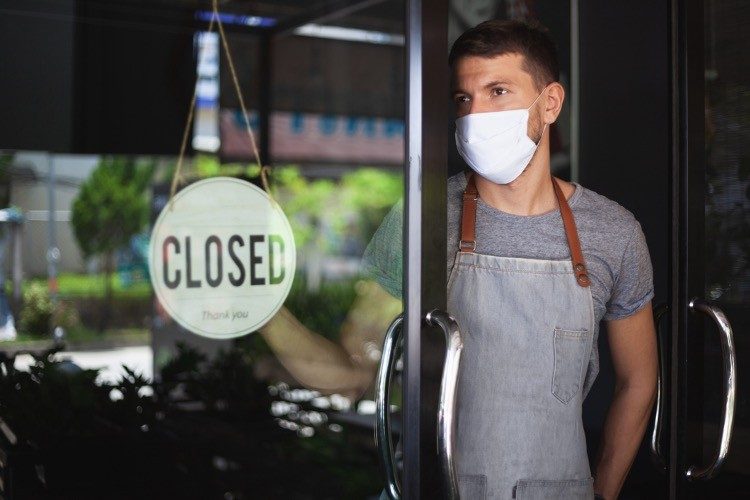
Nearly a third of California’s restaurants have permanently closed, and two-thirds of workers at least temporarily lost their jobs since Governor Gavin Newsom (D) imposed the nation’s first statewide lockdown, a California Senate committee reported Tuesday.
The Senators observe that “few sectors have been battered more by the COVID-19 pandemic than the restaurant industry.”
The report states that “before the COVID-19,” or, rather, before the lockdowns, more than 76,000 eating and drinking establishments in the Golden State employed around 1.4 million people, and up to one million of these employees were terminated or laid off in the first few weeks of the lockdown, with many more facing similar consequences in the following weeks.
It is estimated that nationwide, the entire restaurant industry lost $240 billion in 2020 alone. While restaurants are beginning to open up in many states, statistics still show a heavily damaged market. The number of restaurant-related jobs in California is still down 26 percent compared to March 2020 figures.
Full recovery is estimated to take “years” for the industry. Worker shortages were highlighted by the report, with many potential workers now wary of returning to the industry due to a desire for more stable jobs, a desire for higher wages, health and safety concerns, and unemployment insurance currently paying more than restaurants would. The report even noted that many restaurants would likely close after the reopening date of June 15 due to lack of staff, meaning that the figures from the report are not yet final.
As reported by the Associated Press, California restaurant industry leaders are uncertain about their future.
“Right now, we’re just at the beginning of feeling this crunch,” said Matthew Sutton, California Restaurant Association senior vice president. He implied lawmakers might want to use part of the state’s massive budget surplus to create an incentive program for employees to return to work. Other committee witnesses said they’re hoping for more direct aid either through stimulus or tax relief funding.
The industry is expected to eventually rebound, the restaurant association reported, creating another 160,000 jobs by 2029, for a total of nearly two million statewide.
“This is a two- to three-year recovery,” Kevin McCarney, founder and chief executive officer of Southern California’s Poquito Más restaurant, told the committee. In the meantime, restaurateurs said they have to recover from the revenue they lost during the lockdowns — during which their fixed costs such as rent and insurance continued — and expect the local government to help them.
“It’s not a given that we’re going to survive,” said Laurie Thomas, executive director of the Golden Gate Restaurant Association and owner of two popular restaurants. “We’re all digging out from so much the past 15 months.”
Thomas also voiced her concerns over the lack of specifics on restaurants returning to full capacity only with vaccinated customers, leaving their staff to become “the new ID police” expected to check vaccination cards — a role she and others said they can’t handle.
The shortage of workers has becomes a serious hurdle to overcome in order for the industry to fully rebound, say restaurateurs.
“Just because of the things happening with the pandemic, a lot of people when we had to shut down and be closed for a whole year, decided to go in different industries altogether,” said Ramiro Caravez, general manager and partner of Scott’s Seafood in Oakland.
They also believe that expanded and extended unemployment checks are giving some laid-off workers extra time to decide on their work options.
The Wall Street Journal reports that, in addition to raising wages, other incentives being served up by popular nationwide restaurant chains include measures such as signing bonuses, paid family leave, and free college tuition.
Nationwide, from March to April of last year, restaurants and bars lost 5.5 million jobs to lockdowns, according to the Bureau of Labor Statistics. That meant millions of people found themselves out of work essentially overnight.
Those jobs are coming back: Restaurants and bars added about 176,000 jobs in March. But the sector was still 15 percent, or about 1.8 million jobs, below the pre-lockdown employment level, according to the National Restaurant Association.
In addition to the labor shortages, restaurants are facing shortages of food supplies and surging transportation costs, while also coping with big price swings on staple ingredients.
Californians, along with citizens in other Democrat-run states and cities, were especially hard-hit over the past year with coronavirus lockdowns and restrictions. Now the same governments that implemented such economy-killing directives are getting billions to bail out their ruined industries, with businessmen being hurt the most begging for handouts to stay afloat.




